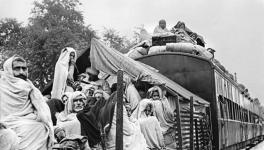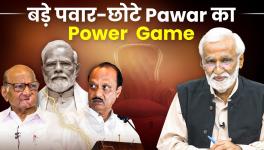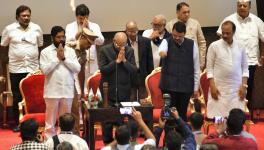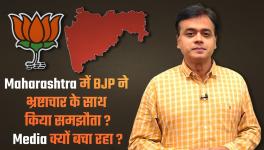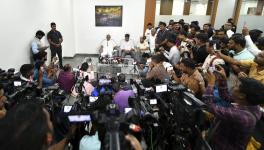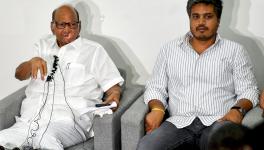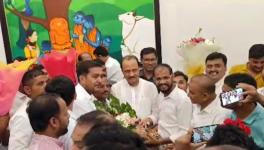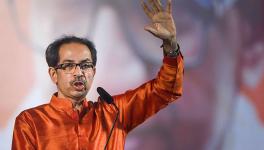Sycophancy in Action: Comparing Modi to Shivaji
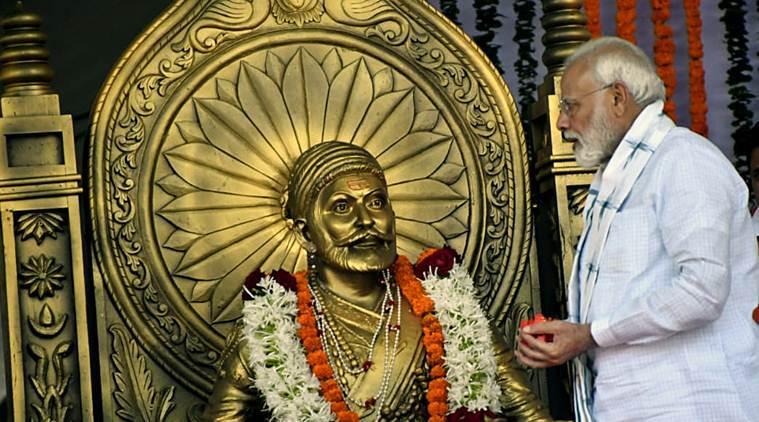
Image for representational use only.Image Courtesy : The Indian Express
Shivaji is a great icon in Maharashtra. Different sections of society have given him very high status, though for diverse reasons. Folklores about him abound in the state. His statues and popular songs on him are very prevalent. These folk songs (Powadas) praise his multifarious actions. So, it was no surprise that, when Jayabhagwan Goyal released his book, Aaj ka Shivaji: Narendra Modi, at a religious-cultural meet organised by Delhi BJP, it elicited strong resentment in Maharashtra. Several leaders from Maharashtra were furious. Shiv Sena leader Sanjay Raut challenged Shivaji’s descendent, Sambhaji Raje, who is in BJP and is a member of Rajya Sabha, to resign on the issue. Sambhaji Raje in turn stated, "We respect Narendra Modi, who was elected as the prime minister of the country for the second time. But neither (Narendra) Modi nor anybody else in the world can be compared with Chhatrapati Shivaji Maharaj."
Not to be left behind, Jitendra Awhad of the Nationalist Congress Party said that he felt Modi-BJP are insulting the pride of Maharashtra. It is not the first time that controversy has erupted around the Maratha warrior. Earlier, the Sambhaji Brigade had demanded a ban on James Laine’s book, Shivaji: A Hindu King in an Islamic Kingdom, for its objectionable content. The Bhandarkar Institute in Pune, which had helped James Laine in his research, was also vandalised.
At another level, there was a talk that Babasaheb Purandare, a brahmin, who has written some popular material on Shivaji will be made the chairman of the committee for statue of Shivaji. Then, Maratha Mahasangh and Shiv Dharm officials objected to a Brahmin heading the committee for a statue of the Maratha warrior. The caste angle in Shivaji’s case is coming to the fore for quite some time.
While there is no dearth of controversies around Shivaji, it is also true that each political tendency has created an image of Shivaji from their political point of view. The question is, who was the real Shivaji? One can see two clear streams of projection in this matter. On one hand, there is an attempt to present Shivaji as the anti-Muslim king, a king who was respecting cows and brahmins (Gau Brahman pratipalak). This view was brought forward from the times of Lokmanya Tilak and picked up by Hindu nationalists, who have been looking for icons in history to suit their political agenda. Nathuram Godse, while criticising Gandhi, says that Gandhi’s nationalism was a dwarf in front of that of Shivaji or Rana Pratap.
Also watch: Shivaji Maharaj and the Idea of "Hindu Nation"
In tune with this, the Hindu nationalists are promoting both of them as icons of Hindu nationalism and giving an anti-Muslim slant to the whole discourse. This discourse also hides in this the Brahmanical agenda of Hindu nationalism as cows and brahmins are presented as the central object of veneration by Shivaji. This image of Shivaji fits well into the current agenda of Hindu nationalists, being spearheaded by the RSS combine.
It is because of this, while seeking votes in Mumbai on the eve of the 2014 elections, Narendra Modi stated that Shivaji attacked Surat to plunder the treasury of Aurangzeb. This also presents the Shivaji-Aurangzeb or Shivaji-Afzal Khan interactions as a battle between Hindus and Muslims. The truth is that Surat was plundered for its wealth as it was a rich port city and Bal Samant’s book on the topic gives in depth description of the same. It is noteworthy that Shivaji began his real career of conquest in 1656 AD when he conquered Javli from the Maratha Chief Chandra Rao More. He took over the treasures of this kingdom. That, it was not a Hindu Muslim battle becomes clear from the fact that in the confrontation with Aurangzeb, it was Mirza Raja Jaisingh who was negotiating and engaging with Shivaji on behalf of Aurangzeb. And, Shivaji had Muslim officers like Kazi Haider as his confidential secretary and many other Muslim generals in his army.
Darya Sarang was chief of the armour division; Daulat Khan was in-charge of his naval division; Ibrahim Khan was another general of significance in his army. This mixed administration just shows that the rulers then did not have Hindus or Muslims as part of their administration depending on their religion. In the confrontation between Shivaji and Afzal Khan, Rustam-e-Jaman was on Shivaji’s side and Afzal Khan had Krisnaji Bhaskar Kulkarni on his side.
As far as Shivaji’s popularity is concerned, it was due to his being a king who had the welfare of his subjects in his mind. He lightened the burden of taxation on the average peasants, and reduced the domination of landlords over the serfs. This picture of Shivaji is well documented in the booklets by Comrade Govind Pansare (Who was Shivaji) and Jayant Gadkari (Shivaji: Ek Lok Kalyankari Raja- Shivaji: A Welfare ). He did not belong to the warrior caste so Brahmins had refused to coronate him. As a result, Gaga Bhatt, a Brahmin from Kashi was brought in who charged a hefty amount.. Teesta Setalvad’s handbook on history for teachers underlined this fact.
Also read: Savarkar, India’s ’Ratna’ of a Different Kind!
Today, while BJP-Brahmanical forces want to present Shivaji as a worshipper of brahmins and cows, the non-upper caste are not ready to fall for this facade anymore. As such, it was Jyotirao Phule who brought forward the caste angle of Shivaji to the fore as he wrote a powada (Poem) in his honour. And now, dalit bahujans are not toeing the Hindu nationalist projection on the issue.
The likes of Jayabhagwan Goyal of BJP are trying to give two messages through such attempts. On one hand, they want to paint Shivaji in an anti-Muslim and Brahmanical colour, while they also want to give the subtle message of similarity of this presentation of Shivaji with what Modi is doing. Non-BJP forces, however, have realised this and want to present the other picture of Shivaji, which was highlighted by the likes of Jyotirao Phule. One which many of those standing for rights of dalit-bahujan today are trying to articulate. The criticism of the said book, since withdrawn, is on these twin aspects. One, about the picture of Shivaji who was concerned about welfare of the farmers, and two, his respect for people of all religions.
Get the latest reports & analysis with people's perspective on Protests, movements & deep analytical videos, discussions of the current affairs in your Telegram app. Subscribe to NewsClick's Telegram channel & get Real-Time updates on stories, as they get published on our website.










